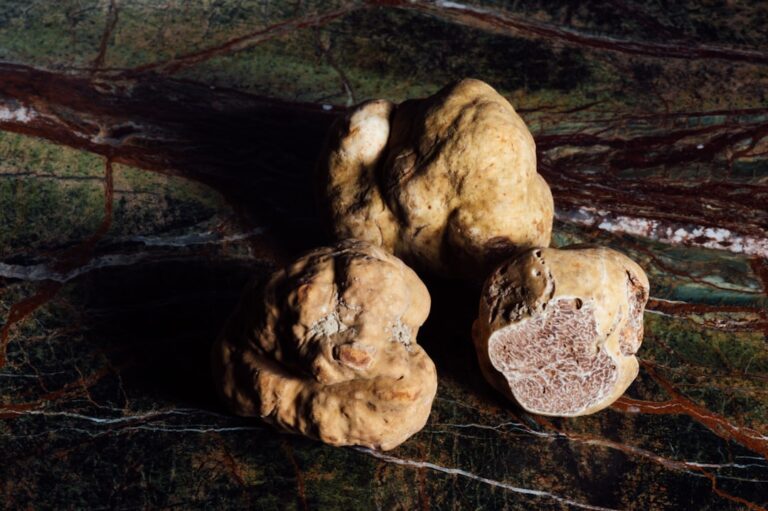Natural Ways to Unclog a Drain

Drain clogs are a common household issue that can disrupt daily activities and cause inconvenience. They occur when various substances such as debris, grease, hair, and other materials accumulate in pipes, impeding water flow. This accumulation can result in slow drainage, unpleasant odors, and complete blockages.
While dealing with clogged drains can be challenging, there are numerous effective methods for clearing them without professional assistance. These range from natural remedies to specialized DIY tools, providing homeowners with multiple options for resolving drain clogs and restoring proper drainage. Identifying the cause of a drain clog is crucial for selecting the most appropriate clearing method.
Different types of blockages may require specific techniques for effective removal. For instance, hair accumulation in shower drains, food particles in kitchen sinks, or a combination of substances in bathroom sinks each necessitate tailored approaches. By understanding the nature of the clog, homeowners can choose the most suitable method for clearing it.
Regular drain maintenance and prompt attention to clogs can prevent more severe plumbing issues from developing over time, potentially saving homeowners from costly repairs in the future.
Key Takeaways
- Drain clogs are a common household issue that can be caused by a variety of factors such as hair, grease, and food particles.
- The baking soda and vinegar method is a natural and effective way to break down clogs and remove debris from drains.
- A hot water flush can help to clear minor clogs and prevent future build-up in drains.
- Using a DIY drain snake can help to physically remove clogs and debris from pipes.
- Enzyme-based drain cleaners are a safe and eco-friendly option for breaking down organic matter in drains.
- A mixture of salt and baking soda can be used to prevent future clogs by keeping drains clean and clear.
- Preventing future drain clogs can be achieved by using drain guards, avoiding pouring grease down drains, and regularly cleaning drains with natural solutions.
Baking Soda and Vinegar Method
Preparation is Key
To start, pour a pot of boiling water down the drain to help loosen any buildup. This initial step is crucial in preparing the drain for the baking soda and vinegar mixture.
The Baking Soda and Vinegar Reaction
Next, pour about half a cup of baking soda into the drain, followed by a mixture of one cup of vinegar and one cup of hot water. The reaction between the baking soda and vinegar creates a foaming action that can help to dislodge debris and clear the clog.
Benefits and Limitations
The baking soda and vinegar method is a safe and environmentally friendly way to address drain clogs, making it a popular choice for many homeowners. However, it’s important to note that this method may not be effective for severe or stubborn clogs, but it can be a good first step in addressing minor blockages. Regular use of this method can help to maintain clean and clear drains, preventing future clogs from occurring.
Hot Water Flush

Another simple yet effective method for clearing drain clogs is the hot water flush. This method is particularly useful for addressing clogs caused by grease or soap scum buildup in kitchen and bathroom drains. To use this method, simply boil a pot of water and carefully pour it down the drain in two to three stages, allowing the hot water to work its way through the pipes and break up the blockage.
The heat from the water can help to melt away grease and soap residue, allowing it to flow more easily through the pipes. The hot water flush method is a quick and easy way to address minor drain clogs without the need for any additional ingredients or tools. It’s important to use caution when pouring boiling water down the drain to avoid burns or damage to the pipes.
While this method may not be effective for all types of clogs, it can be a good first step in addressing minor blockages and maintaining clean and clear drains in your home.
DIY Drain Snake
| DIY Drain Snake Metrics | Value |
|---|---|
| Length | Varies (typically 15-25 feet) |
| Diameter | Varies (typically 1/4 inch to 1/2 inch) |
| Material | Steel, plastic, or other flexible materials |
| Usage | Unclogging drains and pipes |
| Effectiveness | Depends on the clog type and location |
For more stubborn or severe drain clogs, a DIY drain snake can be an effective tool for breaking up and removing debris from the pipes. A drain snake is a long, flexible tool that can be inserted into the drain to physically break up and remove blockages. To use a DIY drain snake, start by removing the drain cover and carefully inserting the snake into the drain.
Use a twisting motion to maneuver the snake through the pipes, breaking up any debris that is causing the clog. Once the blockage has been cleared, flush the drain with hot water to remove any remaining residue. A DIY drain snake can be an effective tool for addressing stubborn clogs that are not easily cleared with other methods.
While commercial drain snakes are available for purchase, a DIY version can be made using a wire coat hanger or similar flexible material. It’s important to use caution when using a drain snake to avoid causing damage to the pipes. With proper technique and care, a DIY drain snake can be an effective solution for clearing tough drain clogs.
Enzyme-Based Drain Cleaner
Enzyme-based drain cleaners are another popular option for addressing drain clogs without harsh chemicals. These cleaners contain natural enzymes that break down organic matter such as hair, grease, and food particles, helping to clear blockages and prevent future clogs. To use an enzyme-based drain cleaner, simply pour it down the affected drain and allow it to sit for the recommended amount of time before flushing with hot water.
Enzyme-based drain cleaners are safe for use in all types of plumbing and are an environmentally friendly alternative to traditional chemical cleaners. They are particularly effective for addressing clogs caused by organic matter, such as hair in shower drains or food particles in kitchen sinks. Regular use of enzyme-based drain cleaners can help to maintain clean and clear drains, preventing future clogs from occurring.
Salt and Baking Soda Mixture

How it Works
A salt and baking soda mixture can be an effective natural remedy for clearing drain clogs. This combination helps to break up debris and remove blockages without the need for harsh chemicals.
Using the Mixture
To use this method, start by pouring about half a cup of salt into the affected drain, followed by half a cup of baking soda. Allow the mixture to sit for several hours or overnight before flushing with hot water.
Benefits and Effectiveness
The salt and baking soda mixture is a simple yet powerful way to address minor drain clogs without the need for specialized tools or ingredients. This method is particularly effective for addressing clogs caused by grease or soap scum buildup in kitchen and bathroom drains. Regular use of this mixture can help to maintain clean and clear drains, preventing future clogs from occurring.
Preventing Future Drain Clogs
In addition to addressing existing drain clogs, it’s important to take steps to prevent future blockages from occurring. One of the best ways to prevent drain clogs is by being mindful of what goes down the drain. Avoid pouring grease, oil, coffee grounds, and other substances that can solidify and cause blockages.
Use a strainer or hair catcher in shower and sink drains to catch hair and debris before it can cause a clog. Regular maintenance can also help to prevent future drain clogs. Consider using natural remedies such as baking soda and vinegar or enzyme-based cleaners on a monthly basis to keep your drains clear and free-flowing.
Additionally, scheduling professional drain cleaning services on a regular basis can help to remove buildup and prevent clogs from occurring. By taking proactive steps to prevent future drain clogs and addressing existing blockages with effective methods such as baking soda and vinegar, hot water flushes, DIY drain snakes, enzyme-based cleaners, salt and baking soda mixtures, you can maintain clean and clear drains in your home. With regular maintenance and proper care, you can avoid the inconvenience and frustration of dealing with stubborn clogs and keep your plumbing system running smoothly.
If you’re looking for more life hacks, check out this article on how to be productive while working from home. It’s filled with tips and tricks to help you stay focused and efficient while working remotely.
FAQs
What are some common methods for unclogging a drain without chemicals?
Some common methods for unclogging a drain without chemicals include using a plunger, a drain snake, a mixture of baking soda and vinegar, or hot water and dish soap.
How does using a plunger help unclog a drain?
Using a plunger creates pressure and suction to dislodge the clog in the drain. It is effective for minor clogs in sinks, showers, and tubs.
What is a drain snake and how is it used to unclog a drain?
A drain snake, also known as a plumber’s snake, is a flexible auger used to dislodge clogs in drains. It is inserted into the drain and rotated to break up and remove the clog.
How does a mixture of baking soda and vinegar help unclog a drain?
The combination of baking soda and vinegar creates a chemical reaction that can help break up and dissolve clogs in the drain. This method is effective for minor clogs and can be followed by flushing the drain with hot water.
Can hot water and dish soap be used to unclog a drain?
Yes, pouring hot water and dish soap down the drain can help break up and flush away grease and soap scum that may be causing a clog. This method is effective for minor clogs in kitchen sinks.





